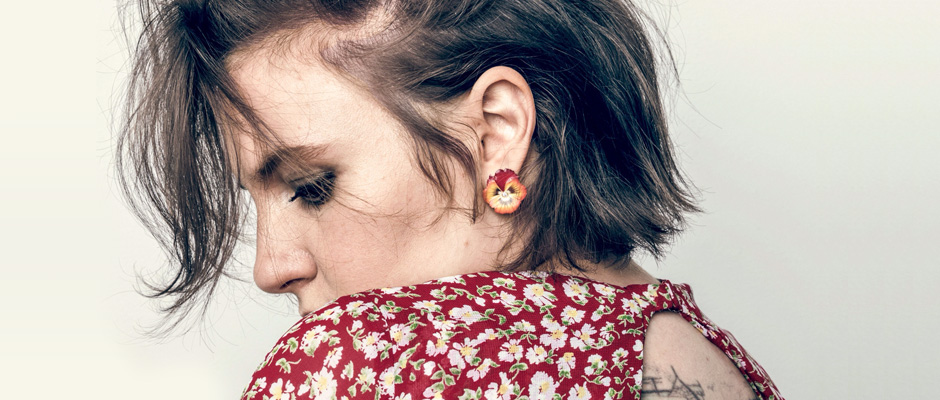
This article originally appeared on Vogue.com
In Vogue’s March issue, Lena Dunham shares the deeply personal story of her decade-long struggle with endometriosis in a moving essay called “Losing It.” The “it” in question, she explains, was her uterus; after eight failed surgical procedures to resolve the famously elusive medical condition, and years of pain that had become nothing short of debilitating, Dunham checks herself into a hospital in New York City and announces, as she recalls, that “I am not leaving until they stop this pain.”
Twelve days later, at the age of 31, she finally undergoes a hysterectomy. Requiring a two-week hospital stay, numerous preoperative measures, and nearly as many psychological evaluations to ensure she understands the implications of the irreversible decision, it’s a victory of sorts—but not one without cost.
For Dunham, the desire to experience pregnancy was always a given; the relinquishment of that possibility, an emotional coming to terms with the hand she has been dealt. “With pain like this,” she writes of the all-consuming physical battle that had become her day-to-day. “I will never be able to be anyone’s mother.” In other words, what was once a last-resort surgery had become the only way forward.
As startling as it may seem for a woman in her early thirties, Dunham’s story is no anomaly: About 600,000 women undergo the gynecological surgery to remove their uterus each year. And while it is difficult to know exactly how many of those cases are due to endometriosis, a 2011 study found the number of women with endometriosis in the U.S. could well exceed previous estimates of 5 million. Worldwide, one in 10 women suffer from endometriosis, which is one of the leading causes of female infertility. Here, what to know if you or someone close to you is struggling with the decision, or the aftermath, of getting a hysterectomy due to endometriosis.
A Difficult Diagnosis
The cause of this estrogen-dependent inflammatory disease, in which tissue that should grow inside the uterus also grows outside of it, is unknown, though researchers have found genes and immune system dysfunction can play a role. Symptoms include pain and infertility, both traits that are incredibly hard to distinguish, define, and, as Dunham writes, defend. “Because I had to work so hard to have my pain acknowledged, there was no time to feel fear or grief. To say goodbye,” she writes. For many like her, it can take years to reach a diagnosis, says Dunham’s internist, Dr. Sandra Gelbard. “These women suffer tremendously before anyone is able to correctly recognize that their symptoms are due to endometriosis,” she explains. “They are referred to gastroenterologists, pain specialists, and often even psychologists.” While ultrasounds and biopsies may help to determine a diagnosis, the most common surgery to confirm endometriosis is called laparoscopy, which involves inflating and cutting open the abdomen so the surgeon can look at the reproductive organs and intestines to see if there are abundant patches of tissue. If that doesn’t work, as in Dunham’s case, a hysterectomy, in which the uterus can be examined and definitively diagnosed following its removal, is a secondary option.
Every Case Is Unique
Just like all things, pain lives on a spectrum, meaning only you can decide just how much is too much. For Dunham, managing her pain became, as she puts it, “a second job,” one that took her through an exhaustive range of therapies (pelvic-floor therapy, massage therapy, color therapy, as well as acupuncture, yoga, and even “a brief yet horrifying foray into vaginal massage”). Some women can benefit from the aforementioned therapies, as well as pain medications, hormone therapies like birth control (which helps alleviate pain during menstrual cycles), and exercise, because of its anti-inflammatory effects. Even dietary changes can help, says Gelbard. “I often recommend a low-sugar, high-fiber, and high-protein diet.” But for Dunham? “I don’t think there was anything else in our arsenal to offer her,” she says, echoing the harrowing bottom line that a certain number of women suffering from the condition must face.
There Is Power in Personal Choice
There is not yet a cure for endometriosis, but there are measures that can be taken to help minimize symptoms. “I know that a hysterectomy isn’t the right choice for everyone,” Dunham writes. “That it’s not a guarantee that this pain will disappear. . . .” It’s true: Even when the uterus is removed, remaining tissue or lesions on other organs can still cause inflammation and pain over time. Other treatment options can happen during laparoscopy, where the surgeon can choose to remove or destroy lesions and scar tissue, though pain often returns after a short period of relief. Another option, especially if pain is located in the center of the abdomen, is to sever pelvic nerves connected with the uterus through presacral neurectomy. Action in any form can help. “I may have felt choiceless before,” writes Dunham, “but I know I have choices now.”
Motherhood Is Still an Option: Egg Freezing, Surrogacy, and Beyond
According to Dunham’s endometriosis specialist, New York gynecological surgeon Dr. Tamer Seckin, a basic hysterectomy for young women removes both uterus and fallopian tubes (since tubal cells are instrumental in ovarian cancer, it’s best to remove them as part of the operation), but preserves hormone-producing ovaries. This means that even though women won’t get their periods, they also won’t undergo immediate menopause. Even better? “Chemically, hormonally, the hormonal tides, ups and downs, continue,” he explains, meaning the brain keeps sending eggs that can be later collected and frozen. “One advantage here,” says Dr. Richard Paulson, chief of reproductive endocrinology and infertility at the University of Southern California’s Keck School of Medicine, “is that women under 35 have very good quality eggs, often with a 50 percent chance of implanting into a surrogate’s uterus.” For Dunham, this news, coupled with the prospect of adoption, is a “thrilling truth I’ll pursue with all my might.”
A Rock-Solid Support Network Is Everything
With more research and studies about endometriosis—its cause, effects, treatments, and health risks—doctors are now armed with more constructive information than ever before; a 2016 study, for instance, found a link to increased risk for heart disease, meaning routine checkups and living a heart-healthy lifestyleare highly recommended for women with the condition. Emotional support is essential, says Gelbard. Talking about pain with friends, family, and a general practitioner can be key to those with the condition, who will become comfortable with describing their symptoms in the process, as is finding an endometriosis specialist who is compassionate, surgically trained, and up-to-date on recent developments and complementary therapies. In the days, weeks, and months following the procedure, those who have undergone a hysterectomy may experience hot flashes and other menopause symptoms, though they are not actually going through the biological process, as well as feelings of anger and loss. That’s why having a network of supporters who have educated themselves about the process, as well as a trusted therapist, can be invaluable. “These women need as much support as they can possibly get,” says Gelbard. “Lena was incredibly lucky to have that.”









